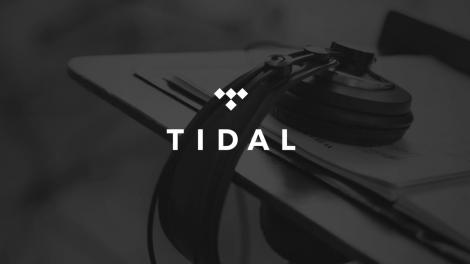
Tidal Music review
Tidal has changed since we first reviewed it seven months ago.
It used to be a plucky new underdog from the makers of WiMP in Sweden, a Spotify-like streaming service with a unique focus on CD-quality music.
It was a shining beacon of opportunity for music lovers who coveted sound quality over everything else; a chance to combine the convenience and mobility of Spotify with the fidelity and prestige of a CD collection.
But while Spotify remains to this day a plucky upstart from Sweden, albeit a rather popular one these days, Tidal has since been acquired by little-known rap star “Jay Z” (ahem) for 56 million American dollars.
Tidal is consequently now the first major music service to be owned by artists themselves, and claims to pay higher royalties to artists and songwriters.
Whether it actually does that or not is unproven, and certainly the controversial American relaunch earlier in 2015 – during which Jay Z dished out shares in the service live on stage not to young, up-and-coming musicians but to some of the wealthiest artists on the planet including wife Beyoncé, Coldplay and Madonna – is seen by some as a curious way of achieving its stated aim.
But whatever your opinion on that, Tidal as a CD-quality alternative to Spotify and a high-quality rival to Deezer Elite remains a compelling proposition and one thoroughly worthy of your consideration.
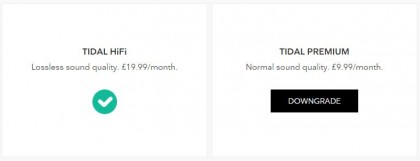
How much does Tidal cost?
When it launched at the back-end of 2014, Tidal cost £19.99/$19.99 for the CD quality service, but seven months on, the service now operates a two-tier system.
Tidal Premium now matches Spotify’s Premium price of 9.99 per month and offers music at the same bitrate – 320kbps. That’s lossy but still not too bad compared to an MP3 at a lower bitrate.
To get the “lossless high fidelity” sound Tidal hangs its hat on, you’ll still need to shell out 19.99 a month for a “Tidal HiFi” membership.
- Get your free one-week Tidal trial
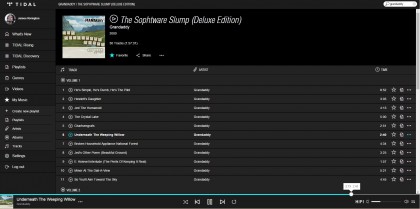
How Tidal works
On the surface, Tidal looks just like Spotify. It’s got an excellent Chrome-based web player and a desktop player for PCs as well as decent iOS and Android apps.
It offers comprehensive playlist functionality, sharing of music as well as offline listening. And the library is off to a good start, now with well over 25 million tracks. We regularly noticed holes in Tidal’s library when we first reviewed it but these days things are looking a lot more healthy.
Where Tidal really differs from its other rivals is that instead of only serving up compressed music formats like MP3 and OGG – as do Spotify, Google Play Music and most of the others – Tidal offers music at CD quality.
It streams music in the form of 16bit, 44.1kHz FLAC files with a bitrate of 1411kbps. And I can tell you now, it’s brilliant.
Tidal is more than just a FLAC streaming service though. It’s been designed from the ground up to be the ultimate music resource for fans of hi-fidelity music, offering playlists and recommendations curated by experienced music journalists, not to mention 75,000 music videos.
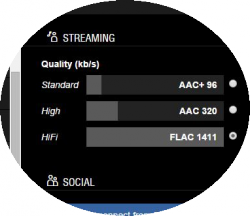
Why FLAC?
For the uninitiated, FLAC is the format of choice for many people who want to listen to music files without having to put up with lossy formats like MP3.
When you compress a music track into an MP3, you have to shave off a lot of detail in order to achieve that miniature file size. Other formats like OGG (as used by Spotify) do a highly commendable job of limiting that shaving mostly to parts of the audio that might be considered ‘inaudible’.
The truth is that all compression formats are a compromise, a victory for convenience over sound quality.
FLAC tracks are also compressed but in a totally different way. They’re a lot more like a zipped file, so when they’re played back, they can be decompressed to their original glory without any loss of fidelity.
Thus, while a CD track might take up anywhere between 60 and 100MB, a FLAC file will be more like 30 to 50MB. MP3s encoded at the maximum bitrate of 320kbps are typically only about 5-10MB in size, and there’s no way to get back the information you threw away during compression. That’s why MP3 is described as a lossy format while FLAC is not.
The upshot of this is that FLAC is the perfect format for delivering CD-quality music down an internet pipe.
There are several other music services that offer FLAC such as Deezer and Qobuz, but it’s still a fairly niche area of growth.
- Read: the 5 best high-quality music streaming services
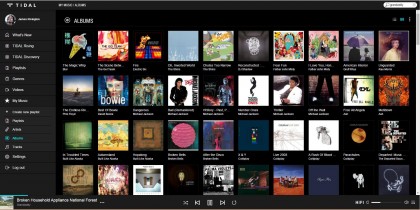
Tidal Music Library
Tidal went live in the UK back in October 2014 with 25 million tracks in its library and that was a good start. Back then, I used my CD collection and Spotify account to guide my search for all the music I would consider ‘mine’ and most of what I searched for was available. But also it wasn’t hard to find some omissions – these days though, the Tidal catalogue is far more complete for all types of music.
For example, one of my favourite bands, Wolf Parade, was completely absent at launch but is now fully available. The Strokes were also missing last year but now all their albums are accounted for.
That said, folk-rock superband Bright Eyes is only represented by two albums instead of the full roster and there are plenty other examples of bands and labels that are yet to sign up. This is a work in progress though and Spotify suffered the same painstaking sign-up process back in the day.
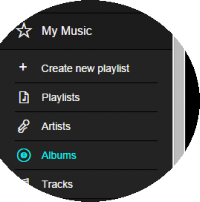
The good news is that the ‘Your Music’ feature that Spotify added a year ago was part of the Tidal service from day one. Big relief.
It works in exactly the same way, allowing you to go through all your favourite bands and ‘star’ any album you’d like to add to your own personal music library. Once you’ve done this, they’re all waiting for you in your ‘My Music’ area.
It’s the digital equivalent of a a CD collection, only the discs are stored in the cloud instead of racks on your wall.
Remember to star the bands themselves at the same time, though, because unlike Spotify, Tidal won’t automatically add the tracks from those albums to ‘My Tracks’ and the artist isn’t auto added to ‘My Artists’ either.
The headlines are that most music I searched for – even obscure stuff – was ready and waiting for me.
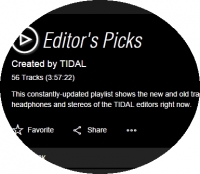
Using Tidal Music
The fear with a brand new music service like this is that it starts off looking quite basic and feature-light.
However, Tidal impressed from the first second we fired it up and while it hasn’t changed much since then, it remains a fully functioned, highly usable service. The Chrome-based web player is visually very similar to Spotify, with a homescreen that offers links to curated playlists and recommended hi-fi albums as well as top 20 charts. It looks great and there’s no learning curve – it works exactly how you’d expect it to.
A simple click on the sidebar will take you to your ‘My Music’ area where you’ll find all your stuff. And browsing music is very easy.
You can’t search by genre, which might have been a great way to win over some Spotify subscribers, but there is a ‘Genres’ button you can click on in the sidebar which will take you to curated areas with playlists and recommended albums. A decent compromise.
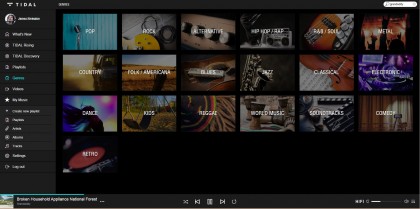
Search generally isn’t terribly smart – misspell an album or artist name even by one character or one piece of punctuation, and you’ll be left with zero results. A bit of optimisation here wouldn’t hurt, but as long as you’re careful you won’t have any problems with it.
And if you’re a fan of the ‘radio’ function on Google Play Music or Spotify, you’ll find an identical service ready and waiting in Tidal. You can select Artist radio or individual track radio, and it’s a great way to discover new music.
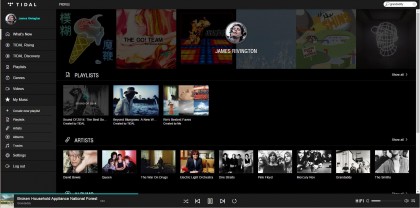
Social features
In the settings, you can connect Tidal to Facebook which will allow you to share music with your friends. You can also extract a URL if you want to link someone to any album, playlist or track.
But the social features are nowhere near as mature as the ones in Spotify – it’ll take a lot of work to catch up in that regard. But judging by the amount of care and attention that’s gone into Tidal pre-launch, I would expect that side of things to be developed quite quickly.
Other formats
In settings you can also change your streaming settings, so if you want to save bandwidth you can drop down a notch to 320kbps AAC or, if you’ve gone insane, all the way down to 96kbps AAC+.
It’s important to have these settings, as I anticipate plenty of people using the FLAC service at home while opting for 320 AAC when they’re out and about. Those files are big, after all…
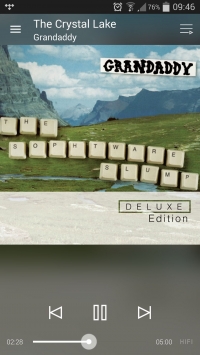
Performance
As you might expect, streaming FLAC files from the Tidal HiFi service is a lot more bandwidth intensive than streaming the Premium option at 320kbps. Typical albums weigh in at around 400MB, so you’re either going to need to download when you’re on wi-fi or make sure you have an unlimited data plan for on-the-move listening. Either that or opt for the reduced-quality AAC versions.
Quickly downloading an album before you leave for work in the morning is a lot harder with FLAC – you’ll be waiting a while, depending on your connection speed.
I found that even when listening on a PC in the web player, tracks did not start instantly when selected. It takes at least a few seconds to buffer up and begin playing when you skip through tracks etc. But when listening to an album or playlist, the next song is buffered ahead of time so you won’t get any annoying gaps in Dark Side of the Moon unless you have bandwidth issues.
This is nothing to do with Tidal’s server performance though, it’ll be down to your own connection and how fast it can suck those FLAC files through the tubes.
As for the 75,000 HD music videos… I would call it a work in progress. A lot of the videos I specifically looked for were absent. I’m a big Queen fan and love a lot of the Queen videos, but there are none in Tidal. The system uses Flash as the video format, and I did notice some quality issues on a lot of the videos, but most of them looked at least 720p – there’s no way to tell for sure.
It’s certainly a great feature to have, though, and something the other services might like to copy, I would suggest.
Sound quality
As for sound quality, what can I say? It’s brilliant.
As you would expect from a FLAC service, sound quality is a lot better than Spotify and the other music streaming services. Hi-fi enthusiasts don’t need to be convinced about the benefits of FLAC over MP3 or OGG.
But what about your everyday Spotify subscriber? Well the good news is that there’s a free trial for Tidal so you can decide for yourself if you think it’s worth it.
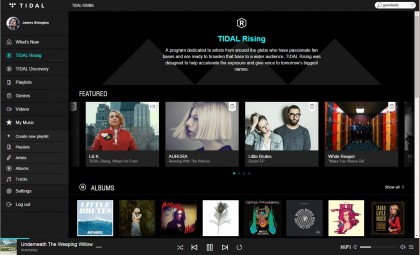
But certainly, you’ll only get the very best out of Tidal if you have some decent audio gear and a willing pair of ears. This could be the perfect excuse to buy that pair of headphones you’ve been eyeing up.
I primarily tested at home with a PC plugged into a separate DAC and headphone amp. Into this was plugged a pair of Oppo PM-1 headphones and with this setup I would defy anyone to tell me Tidal doesn’t sound absolutely incredible.
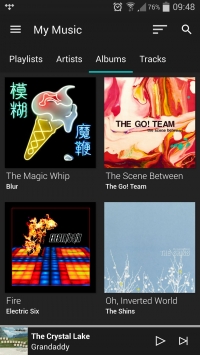
But what about laptops, mobile devices and headphones that don’t cost £1000? I tested with a Samsung Galaxy Note 3, an iPod touch 5th Gen, iPad 2 and several laptops with a variety of headphones and speakers at different price points. Results were great but each device imprints its own noticeable sound signature on the output.
The Galaxy Note 3’s DAC, for instance, is like many Android devices, known for being quite feeble.
Android and iOS as operating systems aren’t exactly the best for handling high resolution audio, either.
And that ultimately means that FLAC will never sound quite as good through an average mobile device’s headphone jack as it does from a device with more competent audio hardware.
But even so, it’s still a noticeable step up from a 320kbps Spotify stream on whatever device you listen on.
However, if you don’t even know which quality setting your Spotify app is set to (320 is not the default!), and if you’re happily using your Apple EarPods to listen to music every day, it’s unlikely that Tidal is for you and that’s fine.
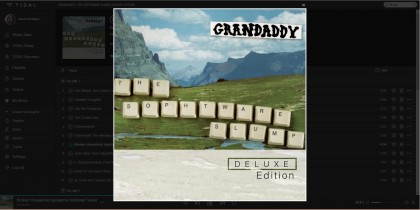
Apps
Update: Tidal has recently released updated desktop apps for PC and Mac. Changes include a more inclusive search function, support for media keys and integration with Ticketmaster. The desktop app will now also be able to detect external audio sources when needed – like a digital-to-analog converter or Mac AirPlay.
When we first tested Tidal, there was no desktop app so computer-bound users had to use the web-player. These days, there is a desktop player but it’s nowhere near as refined as that of Spotify. And a quick look on the Tidal website reveals it’s been hidden away – Tidal wants you to use the web player only. And frankly, that’s probably a good idea – it’s a lot better.
It’s got plenty of functionality, and will even allow you to import your Spotify playlists into Tidal pretty easily, but it’s clearly in need of some development. It doesn’t look great at higher resolutions and so the web player offers a better experience.
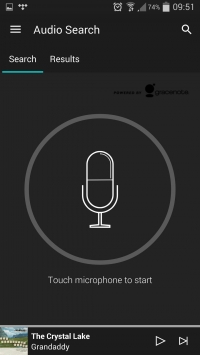
Mobile apps
On the whole, both the Android and iOS apps were very good. There’s not much difference between them, frankly, but I found that the Android one seemed a bit more slick and responsive.
The syncing of playlists and albums for offline listening could be improved. You select ‘Offline’ to download, the button being exactly the same as the Spotify one, but you have to go into your sidebar, select ‘Offline Content’ and then swipe to your download queue in order to see whether something has finished downloading or not. I found this really quite annoying.
It’s worse on iOS. Because, on Android, the downloading files show up in your Action Bar in the same way as any other downloading file. But on iOS, there’s just no way to see what’s downloaded and what’s not.
One very cool feature that the Tidal has that Spotify doesn’t, is audio-search. It’s like having Shazam built directly into the app – press the button and it’ll listen to any song you can hear in your environment, identify it and allow you to save it to your own Tidal library.
- Check out the best headphones around before you invest in Tidal
Verdict
Tidal is the CD quality music streaming service hi-fi people have been waiting for.
For a brand new service, the level of detail that’s been put in and the number of different ways to explore new music is simply fantastic. If it didn’t cost double the price of a standard subscription, I would say it’s well worth anyone switch over immediately.
Whether your ears care about the increase in fidelity, whether you have the headphones and playback devices to make the best of it, and whether the extra cash is worth it, only you can tell. But with a one-week trial for everyone, there’s simply no reason not to at least give it a try.
We liked
Sound quality is the obvious attraction here and provided you listen using the right equipment, you’ll easily notice the difference compared to lower-quality formats.
The service is compatible with Sonos and other players such as Marantz receivers and if you’re an iPhone or iPad owner you’ll be able to stream over AirPlay without any loss of quality.
We disliked
Honestly, the fact that Jay Z now owns Tidal and has dished out shares to all his rich chums in the industry hasn’t made us any more fond of the service. But we can get over that.
It’s clear the desktop player needs plenty of work and the catalogue could do with some fleshing out but these are works in progress and not major issues that should dissuade you from getting involved.
The price is obviously the main turn-off for Tidal. There’s absolutely no reason to opt for the Tidal Premium option over a Spotify Premium one, given that they’re the same price despite Spotify’s clear superiority. No, the only reason to go with Tidal is for the £20 HiFi streaming and on that score, only you know how much you value sound quality.
Verdict
We really love Tidal. And while seeing Jay Z and his mates at the helm is almost as hard as watching Joffrey Lannister terrorise the citizens of King’s Landing, it’s really no reason to not give it a shot. The sound quality is truly excellent and the apps are largely very easy to use.
The price is clearly the barrier to entry but we reckon if you’re a fan of sound quality, the free trial might be enough to persuade you that it’s worth the cost.
![]()
Related Posts
December 6, 2021
7+ Web Design Trends for 2022: Which Will You Use?
December 6, 2021
The 10 Best WordPress Booking Plugins to Use On Your Website
December 6, 2021
How to Use a Web Cache Viewer to View a Cached Page
November 6, 2021
10 Modern Web Design Trends for 2022
November 6, 2021
Best Free SSL Certificate Providers (+ How to Get Started)
November 6, 2021
How to Design a Landing Page That Sends Conversions Skyrocketing
November 6, 2021
What Are the Best WordPress Security Plugins for your Website?
October 6, 2021
Your Guide to How to Buy a Domain Name
October 6, 2021
How to Build a WordPress Website: 9 Steps to Build Your Site
September 6, 2021
10 Best Websites for Downloading Free PSD Files
September 6, 2021
HTML5 Template: A Basic Code Template to Start Your Next Project
September 6, 2021
How Much Does It Cost to Build a Website for a Small Business?
September 6, 2021
A List of Free Public CDNs for Web Developers
September 6, 2021
6 Advanced JavaScript Concepts You Should Know
August 6, 2021
10 Simple Tips for Launching a Website
August 6, 2021
25 Beautiful Examples of “Coming Soon” Pages
August 6, 2021
10 Useful Responsive Design Testing Tools
August 6, 2021
Best-Converting Shopify Themes: 4 Best Shopify Themes
July 6, 2021
What Is Alt Text and Why Should You Use It?
July 6, 2021
24 Must-Know Graphic Design Terms
June 6, 2021
How to Design a Product Page: 6 Pro Design Tips
April 6, 2021
A Beginner’s Guide to Competitor Website Analysis
April 6, 2021
6 BigCommerce Design Tips For Big Ecommerce Results
April 6, 2021
Is WordPress Good for Ecommerce? [Pros and Cons]
March 6, 2021
Make Websites Mobile-Friendly: 5 Astounding Tips
March 6, 2021
Shopify vs. Magento: Which Platform Should I Use?
March 6, 2021
Top 5 Web Design Tools & Software Applications
February 6, 2021
Website Optimization Checklist: Your Go-To Guide to SEO
February 6, 2021
5 UX Design Trends to Dazzle Users in 2021
February 6, 2021
What Is the Average Page Load Time and How Can You Do Better?
February 6, 2021
Choosing an Ecommerce Platform That Will Wow Customers
February 6, 2021
7 Best Practices for Crafting Landing Pages with Forms
February 6, 2021
7 B2B Web Design Tips to Craft an Eye-Catching Website
January 6, 2021
Mobile-Friendly Checker | Check Your Site’s Mobile Score Now
January 6, 2021
8 Tips for Developing a Fantastic Mobile-Friendly Website
December 6, 2020
How to Add an Online Store to Your Website [4 Ways]
December 6, 2020
5 UX Design Tips for Seamless Online Shopping
November 6, 2020
Ecommerce Website Essentials: Does Your Site Have All 11?
November 6, 2020
5 Small Business Website Essentials You Need for Your Site
November 6, 2020
Your Website Redesign Checklist for 2020: 7 Steps for Success
May 1, 2020
Psychology of Color [Infographic]
April 21, 2020
How to start an online store that drives huge sales
January 3, 2020
5 Lead Generation Website Design Best Practices
March 6, 2019
6 Reasons You Should Redesign Your Website in 2019
March 6, 2019
7 Web Design Trends for 2019
February 19, 2019
Who owns the website/app source code, client or developer
February 7, 2019
Don’t Let Your Domain Names Expire in 2019
January 8, 2019
2019 Website Development Trends To Note
October 6, 2017
How Web Design Impacts Content Marketing
October 6, 2017
How to Choose a Navigation Setup
August 6, 2017
Why User Experience Matters to Marketing
July 6, 2017
5 Ways Web Design Impacts Customer Experience
September 6, 2016
How to Learn Angular
September 6, 2016
The Excuses for Not Having a Website (Infographic)
September 6, 2016
How to Build an Award-Winning Web Design Team
September 6, 2016
13 Free Data Visualization Tools
August 6, 2016
How Selling Pastries Helped Us Design a Better Product
August 6, 2016
11 Sites to Help You Find Material Design Inspiration
July 4, 2016
How to change free wordpress.com url
April 6, 2016
The 5 Best Free FTP Clients
April 6, 2016
7 Free UX E-Books Worth Reading
March 6, 2016
Can Handwritten Letters Get You More Clients?
December 10, 2015
Star Wars Week: How to create your own Star Wars effects for free
December 6, 2015
20 "Coming Soon" Pages for Inspiration
December 6, 2015
6 Free Tools for Creating Your Own Icon Font
December 6, 2015
9 Useful Tools for Creating Material Design Color Palettes
November 6, 2015
20 Free UI Kits to Download
November 6, 2015
50 Web Designs with Awesome Typography
November 6, 2015
When to Use rel="nofollow"
November 6, 2015
7 Free Books That Will Help You Become More Productive
November 6, 2015
50 Beautiful One-Page Websites for Inspiration
November 6, 2015
Circular Images with CSS
October 6, 2015
Lessons Learned from an Unsuccessful Kickstarter
October 6, 2015
5 Games That Teach You How to Code
October 6, 2015
Cheatsheet: Photoshop Keyboard Shortcuts
October 6, 2015
An Easy Way to Create a Freelance Contract for Your Projects
October 6, 2015
50 Design Agency Websites for Inspiration
September 29, 2015
JB Hi-Fi shutting the book on ebooks
September 24, 2015
Opinion: Quick, Quickflix: It's time to give yourself the flick
September 24, 2015
New Star Wars 360-degree video is among first on Facebook
September 21, 2015
Apple purges malicious iPhone and iPad apps from App Store
September 12, 2015
Apple's new Live Photos feature will eat up your storage
September 12, 2015
The latest Windows 10 Mobile preview has been delayed
September 12, 2015
IBM buys StrongLoop to add Node.js development to its cloud
September 8, 2015
Fake Android porn app takes your photo, then holds it ransom
September 6, 2015
50 Restaurant Websites for Inspiration
September 6, 2015
Zero UI — The Future of Interfaces
September 6, 2015
50 Beautiful Websites with Big Background Images
September 6, 2015
Infographic: 69 Web Design Tips
September 6, 2015
Free Windows 10 Icons
September 2, 2015
Instagram turns itself into a genuine messaging service
August 11, 2015
In Depth: How Microsoft taught Cortana to be more human
August 11, 2015
Windows 10 price, news and features
August 11, 2015
Windows 10's broken update introduces endless reboot loop
August 11, 2015
Windows 10 races to 27m installs
August 11, 2015
Windows 10 IoT Core gets first public release
August 10, 2015
iOS Tips: How to backup iPhone to an external drive
August 10, 2015
Windows 8.1 RT finally getting Windows 10 Start Menu
August 10, 2015
How to use Windows Hello
August 10, 2015
Review: Moto Surround
August 10, 2015
Review: Moto G (2015)
August 9, 2015
8 of the best free VPN services
August 8, 2015
Use Firefox? Mozilla urges you update ASAP
August 7, 2015
Mac Tips: Apple Mail: How to remove the Favorites Bar
August 7, 2015
How to make the OS X dock appear faster
August 7, 2015
Review: BQ Aquaris E45 Ubuntu Edition
August 7, 2015
Review: Acer Liquid Jade Z
August 6, 2015
How to reinstall Linux
August 6, 2015
How to reinstall Windows
August 6, 2015
Updated: Apple Music: release date, price and features
August 6, 2015
Social News Websites for Front-End Developers
August 6, 2015
10 Free JavaScript Books
August 6, 2015
50 Beautiful Blog Designs
August 6, 2015
Animated SVG Pipes Effect
August 6, 2015
Launching Your First App
August 5, 2015
Windows 10 goes freemium with paid apps
August 5, 2015
Updated: Week 1 with Windows 10
August 5, 2015
Mac Tips: How to manage Safari notifications on Mac
August 5, 2015
Microsoft Sway may kill the PowerPoint presentation
August 4, 2015
Microsoft gives Outlook on the web a new look
August 4, 2015
Mac OS X vulnerable to new zero-day attack
August 4, 2015
Windows 10 users warned of two scams
August 4, 2015
Microsoft's Docs.com is now available to everyone
August 3, 2015
Mac Tips: How to edit the Favorites sidebar on Mac
August 3, 2015
Updated: Windows 10 price, news and features
July 29, 2015
Review: HP ProDesk 405 G2
July 29, 2015
Hands-on review: HP Elite x2 1011
July 29, 2015
Hands-on review: Updated: Windows 10 Mobile
July 29, 2015
Review: Updated: Nvidia Shield Android TV
July 28, 2015
LIVE: Windows 10 launch: Live Blog!
July 28, 2015
How to prepare for your upgrade to Windows 10
July 28, 2015
Review: Updated: Windows 10
July 28, 2015
Review: Updated: HP Pro Tablet 608
July 28, 2015
Review: Heat Genius
July 28, 2015
Hands-on review: Moto X Play
July 28, 2015
Hands-on review: Moto X Style
July 28, 2015
Hands-on review: Moto G (2015)
July 28, 2015
Review: 13-inch MacBook Air (early 2015)
July 28, 2015
Hands-on review: OnePlus 2
July 28, 2015
Review: LG 65EG960T 4K OLED
July 28, 2015
Mac Tips: How to share printers on Mac
July 27, 2015
Apple Music's arrival hasn't opened Pandora's box
July 26, 2015
Review: Garmin Swim
July 25, 2015
How to merge OS X contacts into an existing list
July 25, 2015
Hands-on review: UPDATED: ZTE Axon
July 24, 2015
Mac Tips: How to zoom in on a Mac
July 24, 2015
What Windows 10 means for the enterprise
July 24, 2015
Review: JBL Charge 2 Plus
July 24, 2015
Review: Acer Aspire S7
July 24, 2015
Review: Updated: Canon G3 X
July 24, 2015
Review: Updated: iPad Air 2
July 24, 2015
Review: Thinksound On1
July 24, 2015
Review: Asus Chromebook Flip
July 24, 2015
Review: Garmin Forerunner 225
July 23, 2015
Review: Garmin nuvi 68LM
July 23, 2015
Review: Samsung Galaxy S6 Active
July 23, 2015
Review: Bowers and Wilkins P5 Wireless
July 23, 2015
Review: Dell XPS 15 (2015)
July 21, 2015
Review: Fuji S9900W
July 21, 2015
Review: Updated: Fitbit Surge
July 21, 2015
Review: UE Roll
July 21, 2015
Hands-on review: Ubik Uno
July 20, 2015
Review: Samsung HW-J650
July 20, 2015
Updated: 40 best Android Wear smartwatch apps 2015
July 20, 2015
Review: Acer Chromebook C740 review
July 20, 2015
Review: Huawei Talkband B2
July 20, 2015
Review: Dell Venue 10 7000
July 20, 2015
Review: Intel Core i7-5775C
July 17, 2015
Mac Tips: How to delete locked files on Mac
July 17, 2015
Review: Pebble Time
July 16, 2015
Microsoft just made Windows XP even less secure
July 16, 2015
Windows 8.1 RT is getting an update this September
July 16, 2015
OS showdown: Windows 10 vs Windows 8.1 vs Windows 7
July 16, 2015
Review: Acer CB280HK
July 15, 2015
Windows 10 is ready for new laptops and PCs
July 15, 2015
Explained: How to take a screenshot in Windows
July 15, 2015
Office for Windows 10 appears in latest build
July 14, 2015
Review: ZTE Axon
July 14, 2015
Review: ViewSonic VP2780-4K
July 14, 2015
Hands-on review: SanDisk Connect Wireless Stick
July 14, 2015
Review: Oppo PM-3
July 14, 2015
Review: BT 11ac Dual-Band Wi-Fi Extender 1200
July 14, 2015
Review: Fuji X-T10
July 13, 2015
How to build an SEO strategy for your business
July 13, 2015
Review: Lenovo ThinkPad Yoga 15
July 13, 2015
Review: Audio-Technica ATH-MSR7
July 13, 2015
Review: Garmin NuviCam LMT-D
July 13, 2015
Review: Dell Inspiron 13 7000
July 13, 2015
Hands-on review: AstroPi SenseHAT
July 13, 2015
Hands-on review: EE Rook
July 13, 2015
Hands-on review: Updated: HTC Vive
July 12, 2015
Here's the ultimate software list for PC fanatics
July 10, 2015
How to use the new Photos app for Mac
July 10, 2015
Windows 10 Insider Preview Build 10166 available now
July 10, 2015
Splunk spends big on cybersecurity acquisition
July 10, 2015
Making Windows 10 apps just got a whole lot easier
July 10, 2015
Review: Lenovo LaVie Z 360
July 9, 2015
OS X El Capitan public beta available right now
July 9, 2015
Microsoft finally unveils Office 2016 for Mac
July 9, 2015
Review: Updated: Chromecast
July 9, 2015
Review: Updated: Tesco Hudl 2
July 9, 2015
Review: Lenovo ThinkPad E550
July 9, 2015
Review: Updated: Google Nexus 6
July 8, 2015
What you need to know about Windows Server 2016
July 7, 2015
Microsoft to hike enterprise cloud pricing
July 6, 2015
Hacking Team end up being totally 0wned
July 6, 2015
Review: HP Pro Slate 12
July 6, 2015
Review: Samsung 850 Pro 2TB
July 6, 2015
Review: Asus RT-AC87U
July 6, 2015
Review: Jawbone UP2
July 6, 2015
Reimagining the Web Design Process
July 6, 2015
50 Clean Websites for Inspiration
July 6, 2015
15 Free Books for People Who Code
July 6, 2015
Web Storage: A Primer
July 6, 2015
A Look at Some CSS Methodologies
July 3, 2015
6 Essential Mac Mouse and Trackpad Tips
July 2, 2015
How to install a third party keyboard on Android
July 2, 2015
Review: UPDATED: Asus Zenfone 2
July 2, 2015
Review: Alienware 13
July 2, 2015
Review: HP DeskJet 1010
July 1, 2015
5 issues we want Apple Music to fix
June 13, 2015
Cortana will get its own button on Windows 10 PCs
June 12, 2015
Windows 10 will come with universal Skype app
June 12, 2015
iPad music production: 18 Best apps and gear
June 12, 2015
Windows 10 all set for early enterprise struggle
June 12, 2015
Review: Garmin VIRB Elite
June 11, 2015
Review: Updated: Nvidia Shield Tablet
June 11, 2015
Review: Nokia Lumia 635
June 10, 2015
Microsoft brings more online tweaks to Office 365
June 10, 2015
Mac Tips: How to use Screen Sharing in Mac OS X
June 9, 2015
Hands-on review: Meizu M2 Note
June 9, 2015
Hands-on review: EE 4GEE Action Camera
June 9, 2015
Review: Toshiba 3TB Canvio external hard drive
June 9, 2015
Review: Olympus SH-2
June 8, 2015
Hands-on review: Updated: Apple CarPlay
June 8, 2015
UPDATED: iOS 9 release date, features and news
June 8, 2015
Review: Updated: Roku 2
June 8, 2015
Review: Updated: PlayStation Vue
June 8, 2015
Review: Dell PowerEdge R730
June 8, 2015
Review: Canon SX710 HS
June 7, 2015
UPDATED: iOS 9 release date, features and rumors
June 7, 2015
Review: Lenovo S20-30
June 6, 2015
Free Writing Icons
June 6, 2015
15 CSS Questions to Test Your Knowledge
June 6, 2015
The Best CSS Reset Stylesheets
June 6, 2015
How CSS Specificity Works
June 5, 2015
'Delay' is a new feature in Windows 10
June 5, 2015
Review: Beyerdynamic Custom One Pro Plus
June 5, 2015
Latest SEO Marketing tools
June 5, 2015
Review: Nvidia Shield Android TV
June 5, 2015
Review: Honor 4X
June 5, 2015
Review: In Depth: Oppo R5
June 3, 2015
Hands-on review: Huawei P8 Lite
June 3, 2015
How To: How to create eBooks on a Mac
June 3, 2015
Review: Canon 750D (Rebel T6i)
June 2, 2015
Review: Updated: Asus ZenWatch
June 2, 2015
Review: Alcatel OneTouch Idol 3
June 2, 2015
Review: Updated: Nokia Lumia 1520
June 2, 2015
Review: Updated: Yotaphone 2
June 2, 2015
Review: Updated: Nokia Lumia 625
June 2, 2015
Review: Creative Muvo Mini
June 1, 2015
Review: Acer TravelMate P645 (2015)
June 1, 2015
Hands-on review: Corsair Bulldog
May 29, 2015
In Depth: NetApp: a requiem
May 29, 2015
July is looking definite for Windows 10 release
May 29, 2015
Hands-on review: Google Photos
May 28, 2015
Mac Tips: The 16 best free GarageBand plugins
May 28, 2015
Review: Canon 760D (Rebel T6s)
May 27, 2015
Review: Lenovo Yoga 3 14
May 27, 2015
Hands-on review: Serif Affinity Photo
May 27, 2015
Review: Garmin Vivoactive
May 26, 2015
Review: Datacolor Spyder5 Elite
May 26, 2015
Hands-on review: Sony Xperia Z3+
May 26, 2015
Review: Epson BrightLink Pro 1410Wi
May 26, 2015
Review: Technics Premium C700
May 26, 2015
Review: Canon EOS M3
May 26, 2015
Review: Updated: HTC One M9
May 26, 2015
Review: Updated: Sony Xperia Z3 Compact
May 25, 2015
Review: Updated: New Nintendo 3DS
May 25, 2015
Updated: 50 best Mac tips, tricks and timesavers
May 25, 2015
Updated: Windows email: 5 best free clients
May 25, 2015
Instagram is planning to invade your inbox
May 25, 2015
Review: Updated: Foxtel Play
May 24, 2015
How Windows 10 will change smartphones forever
May 24, 2015
Review: Vodafone Smart Prime 6
May 24, 2015
Review: Updated: iPad mini
May 22, 2015
Office Now may be Cortana for your work life
May 22, 2015
Review: Updated: Lenovo Yoga 3 Pro
May 22, 2015
Review: Microsoft Lumia 640 LTE
May 22, 2015
Review: Updated: Fitbit Flex
May 21, 2015
Updated: Best free Android apps 2015
May 21, 2015
Review: Asus ZenBook Pro UX501
May 21, 2015
Review: Sennheiser Momentum In-Ear
May 20, 2015
Hands-on review: UPDATED: Asus Zenfone 2
May 20, 2015
OS X 10.11 release date, features and rumors
May 18, 2015
Updated: Best free antivirus software 2015
May 18, 2015
iPhone 6S rumored to launch as soon as August
May 18, 2015
Microsoft ready to pounce and acquire IFS?
May 17, 2015
5 of the most popular Linux gaming distros
May 16, 2015
Review: Acer Chromebook 15 C910
May 16, 2015
Review: Lenovo ThinkPad X1 Carbon (2015)
May 16, 2015
Review: Polk Nue Voe
May 16, 2015
The top 10 data breaches of the past 12 months
May 16, 2015
Hands-on review: Updated: LG G4
May 16, 2015
Review: Updated: Quickflix
May 16, 2015
Review: LG Watch Urbane
May 16, 2015
Review: Razer Nabu X
May 16, 2015
Hands-on review: Updated: Windows 10
May 16, 2015
Review: UPDATED: Moto X
May 16, 2015
Review: Updated: Moto G (2013)
May 12, 2015
Review: TomTom Go 50
May 12, 2015
Review: Updated: Moto G (2014)
May 12, 2015
Review: Garmin Vivofit 2
May 12, 2015
Review: Asus Transformer Book Flip TP300LA
May 11, 2015
Review: MSI GT80 Titan
May 11, 2015
Review: Monster SuperStar BackFloat
May 9, 2015
Review: Updated: Apple Watch
May 7, 2015
5 million internet users infected by adware
May 7, 2015
Review: Updated: New MacBook 2015
May 6, 2015
Android M will be shown at Google IO 2015
May 6, 2015
Review: Epson WorkForce Pro WF-4630
May 6, 2015
Review: Master & Dynamic MH40
May 6, 2015
How to Use Gulp
May 6, 2015
Getting Started with Command-Line Interfaces
May 6, 2015
What It’s Like to Contribute to WordPress
May 6, 2015
Ultimate Guide to Link Types for Hyperlinks
May 6, 2015
11 Things You Might Not Know About jQuery
May 5, 2015
Hands-on review: Updated: PlayStation Now
May 5, 2015
Review: Lenovo ThinkPad Yoga 12
May 5, 2015
Review: Updated: iPad Air
May 5, 2015
Review: Panasonic SZ10
May 5, 2015
Review: Updated: Fetch TV
May 4, 2015
Review: Cambridge Audio Go V2
May 3, 2015
Review: Lightroom CC/Lightroom 6
May 2, 2015
5 of the most popular Raspberry Pi distros
May 1, 2015
Review: PlayStation Vue
May 1, 2015
Hands-on review: Updated: Microsoft HoloLens
April 30, 2015
Build 2015: Why Windows 10 may not arrive until fall
April 29, 2015
The biggest announcements from Microsoft Build 2015
April 29, 2015
Hands-on review: TomTom Bandit
April 29, 2015
Hands-on review: EE Harrier Mini
April 28, 2015
Review: Samsung NX500
April 28, 2015
Hands-on review: LG G4
April 28, 2015
Review: Patriot Ignite 480GB SSD
April 28, 2015
Hands-on review: EE Harrier
April 28, 2015
Review: Linx 10
April 28, 2015
Review: 1&1 Cloud Server
April 26, 2015
Hands-on review: Acer Iconia One 8
April 25, 2015
How to run Windows on a Mac with Boot Camp
April 24, 2015
Dropbox Notes poised to challenge Google Docs at launch
April 24, 2015
Hands-on review: Acer Aspire E14
April 24, 2015
Hands-on review: UPDATED: Valve Steam Controller
April 24, 2015
Review: Acer Iconia One 7
April 23, 2015
Windows 10 just revived everyone's favorite PC game
April 23, 2015
Google opens up Chromebooks to competitors
April 23, 2015
Here's how Outlook 2016 looks on Windows 10
April 23, 2015
Hands-on review: Updated: Acer Liquid M220
April 23, 2015
Hands-on review: Acer Aspire Switch 10 (2015)
April 23, 2015
Hands-on review: Acer Aspire R 11
April 22, 2015
Review: Alienware 17 (2015)
April 22, 2015
Hands-on review: Updated: HP Pavilion 15 (2015)
April 21, 2015
This is how Windows 10 will arrive on your PC
April 21, 2015
Review: iMac with Retina 5K display
April 21, 2015
Review: Epson XP-420 All-in-One
April 18, 2015
Google Now brings better search to Chrome OS
April 17, 2015
Review: Epson Moverio BT-200
April 17, 2015
Review: Pentax K-S2
April 16, 2015
Updated: Android Lollipop 5.0 update: when can I get it?
April 15, 2015
Hands-on review: Updated: Huawei P8
April 15, 2015
Review: SanDisk Ultra Dual USB Drive 3.0
April 15, 2015
Review: Updated: LG G3
April 15, 2015
Review: Updated: LG G3
April 15, 2015
Review: Crucial BX100 1TB
April 13, 2015
iOS 8.4 beta reveals complete Music app overhaul
April 13, 2015
Linux 4.0: little fanfare for a tiny new release
April 13, 2015
Achievement unlocked: Microsoft gamifies Windows 10
April 13, 2015
Best Android Wear smartwatch apps 2015
April 13, 2015
Review: Acer Aspire R13
April 12, 2015
Review: TP-Link Archer D9
April 10, 2015
Microsoft's new browser arrives for Windows 10 phones
April 10, 2015
Review: LG UltraWide 34UC97
April 9, 2015
Office now integrates with Dropbox on the web
April 9, 2015
Now you can buy video games with Apple Pay
April 9, 2015
Updated: iOS 8 features and updates
April 9, 2015
Microsoft's stripped down Nano Server is on the way
April 8, 2015
Skype Translator gets even more features
April 8, 2015
Windows mail services hit by widespread outages
April 8, 2015
Review: UPDATED: Amazon Echo
April 8, 2015
Hands-on review: Dell Venue 10 7000
April 8, 2015
Review: Updated: OS X 10.10 Yosemite
April 7, 2015
Google's GMeet could kill teleconferencing
April 7, 2015
Is Redstone the first Windows 10 update?
April 7, 2015
Next peek at Windows Server 2016 due next month
April 7, 2015
Review: Acer Aspire Switch 11
April 7, 2015
Review: Adobe Document Cloud
April 6, 2015
Hands-on review: Updated: New MacBook 2015
April 6, 2015
Freebie: 100 Awesome App Icons
April 6, 2015
Six Revisions Quarterly Report #1
April 6, 2015
A Modern Approach to Improving Website Speed
April 6, 2015
Disable Text Selection with CSS
April 4, 2015
Review: Nikon D7200
April 3, 2015
Amazon Prime video now streams to any Android tablet
April 3, 2015
Review: Google Cardboard
April 3, 2015
Review: MSI WS60
April 2, 2015
Chrome users can now run 1.3 million Android apps
April 2, 2015
See Windows 10 Mobile running on an Android handset
April 2, 2015
Review: Mini review: Macphun Noiseless Pro 1.0
April 2, 2015
Review: Intel SSD 750 Series 1.2TB
April 2, 2015
Review: BenQ TreVolo
April 2, 2015
Hands-on review: Nikon 1 J5
April 1, 2015
Microsoft launches Windows 10 music and video apps
April 1, 2015
Review: mini review: Sony XBA-H1
December 19, 2014
Review: CoPilot Premium sat nav app
December 19, 2014



























































































































































































































































































































































































































































































































































































